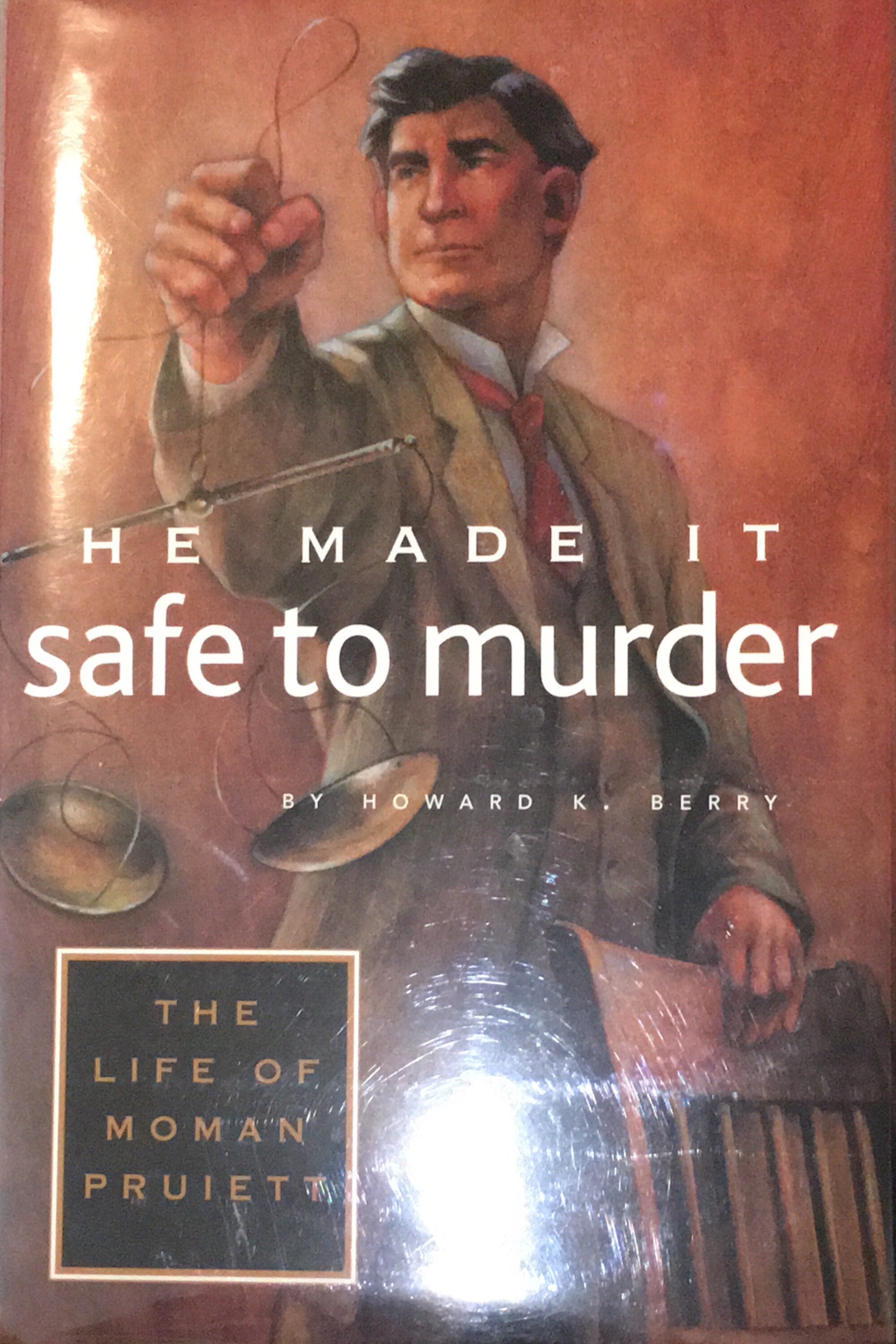I ran across this one at Half-Price a few weeks ago. It was a little more expensive than I would have liked, but not signed Capstick level. I vacillated on it, but ended up pulling the trigger because:
- It is the only copy of this book I’ve ever seen.
- It was published by a small press, so it probably isn’t that common.
- It was still cheap relative to Amazon asking prices.
- I’d actually read about the subject, and the book itself, in Bill James’s Popular Crime. This is a case (kind of like guns) where I paid as much for the story behind the book as the book itself.

He Made It Safe to Murder: The Life of Moman Pruiett by Howard K. Berry.
Who was Moman Pruiett? Like Earl Rogers, Pruiett is one of those forgotten titans of the law. As a criminal lawyer, he operated mostly out of Texas and (what became) Oklahoma, and later Florida, around the turn of the last century. Out of 342 murder cases he acted as the defense attorney for, he won outright acquittals in 304. 37 of his clients were convicted of lesser crimes than murder. The only client of his who was actually sentenced to death received a presidential commutation of his sentence.
How did Moman Pruiett do this? Well, he wasn’t just a criminal lawyer: he was a criminal lawyer. The young Pruiett had two felony convictions on his record and spent three years in prison. In spite of that, he read for the law and somehow managed to gain admission to the bar at the age of 22. It was a different time back then.
Even after being admitted, Pruiett didn’t have a lot of respect for the law: he suborned perjury, manipulated juries (in one case retold by Bill James, Pruiett figured out who the jury foreman was going to be and had the defendant’s sister seduce and move in with the man), kidnapped witnesses, played poker with judges (and, per James, “accepted acquittals to settle debts”) and generally just did whatever he needed to – legal or not – to get his clients off.
There’s an online article that partially retails one of the most famous Pruiett stores. Since this is already running long, I’ll put a jump here.
By 1925, Pruiett had lost some of his powers, and a lot of money speculating on land in Florida. The law was passing him by, and his antics had become less tolerable to the courts. And, like Earl Rogers, Pruiett had stated descending into alcoholism. He died in a flophouse in 1945.
Howard Berry was a young lawyer when he encountered Pruiett during the long downhill slide. He spent a lot of time listening to Pruiett’s stories (and buying him drinks) and a lot more time researching those stories and Pruiett’s life. He ended up writing what became this book. But when Berry tried to sell it to publishers, they passed: Pruiett and many of the people he defended were still alive, Berry did not shy away from depicting the more “colorful” aspects of Pruiett’s lawyering, and the publishers were afraid of lawsuits. (At least, that’s the version of the story retold in the preface to this book.)
Somehow, Pruiett got his hands on a copy of Berry’s manuscript, cut it down to about 60% of the original size (mostly by removing the “color”) and published it under his own name as Moman Pruiett: Criminal Lawyer. Later on, there was a lawsuit: Berry won back the rights to his original manuscript in the 1950s, and the book was finally published in 2001 by the Oklahoma Heritage Association.
Howard K. Berry passed away in 2001. His son and grandson both became lawyers as well. The Oklahoma County Bar Association gives out the Howard K. Berry Sr. Award for “outstanding achievement or contribution to Justice or the Justice System”.
Moman Pruiett entry from The Encyclopedia of Oklahoma History and Culture.